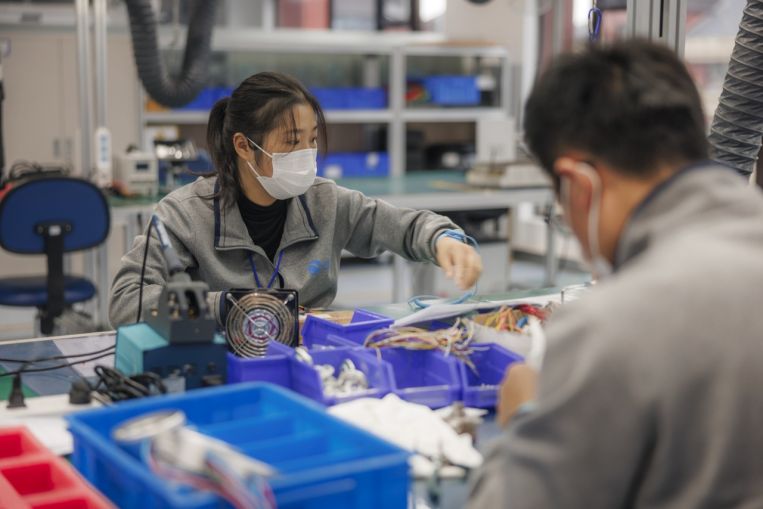BEIJING (REUTERS) – China’s factory activity expanded at its fastest pace in four months in October, buoyed by stronger demand, but power shortages and rising costs weighed on production, a business survey showed on Monday (Nov 1).
The Caixin/Markit Manufacturing Purchasing Managers’ Index (PMI) rose to 50.6 in October – its highest level since June. Economists in a Reuters poll had expected the index to remain unchanged from September at 50.0. The 50-mark separates growth from contraction on a monthly basis.
China’s economy is slowing after an impressive rebound from the pandemic-driven slump early last year, with its sprawling manufacturing sector hit by Covid-19 outbreaks, higher costs, production bottlenecks, and more recently, power rationing.
A power crunch triggered by a shortage of coal, tougher emissions standards, and strong industrial demand has led to widespread curbs on electricity usage, hurting factory output.
A sub-index for output showed production shrank for the third consecutive month and at a faster rate than in September.
An official survey on Sunday showed China’s factory activity contracted more than expected in October to shrink for a second month.
The Caixin survey, which focuses on smaller, export-oriented firms in coastal regions, showed domestic demand was stronger as local Covid-19 cases dwindled, but foreign demand remained sluggish as the pandemic raged on in other countries.
A sub-index for new orders rose to 51.4 from 50.8 in September, while new export orders shrank for a third straight month.
“To sum up, manufacturing recovered slightly in October from the previous month. But downward pressure on economic growth continued,” said Wang Zhe, senior economist at Caixin Insight Group.
“Supply strains became the paramount factor affecting the economy. Shortages of raw materials and soaring commodity prices, combined with electricity supply problems, created strong constraints for manufacturers and disrupted supply chains.”
Input prices rose at their fastest pace since December 2016, partly due to increasing energy and transport costs, while factories cut jobs for the third straight month, albeit at a slower pace than in September, according to the survey.
To help struggling manufacturers, China’s cabinet announced on Wednesday that the government will defer some taxes for manufacturers for three months from November.
China’s economic growth is likely to slow to 5.5 per cent in 2022 from an expected expansion of 8.2 per cent this year, a Reuters poll showed. The economy expanded by 9.8 per cent in the first three quarters of 2021 from a year ago.
Wang from Caixin Insight Group warned that a new wave of Covid-19 outbreaks in many central and western regions since late October could deal a fresh blow to economic activity.
“It is critical to balance the goals of controlling the outbreaks and maintaining normal economic activity,” said Wang.













































